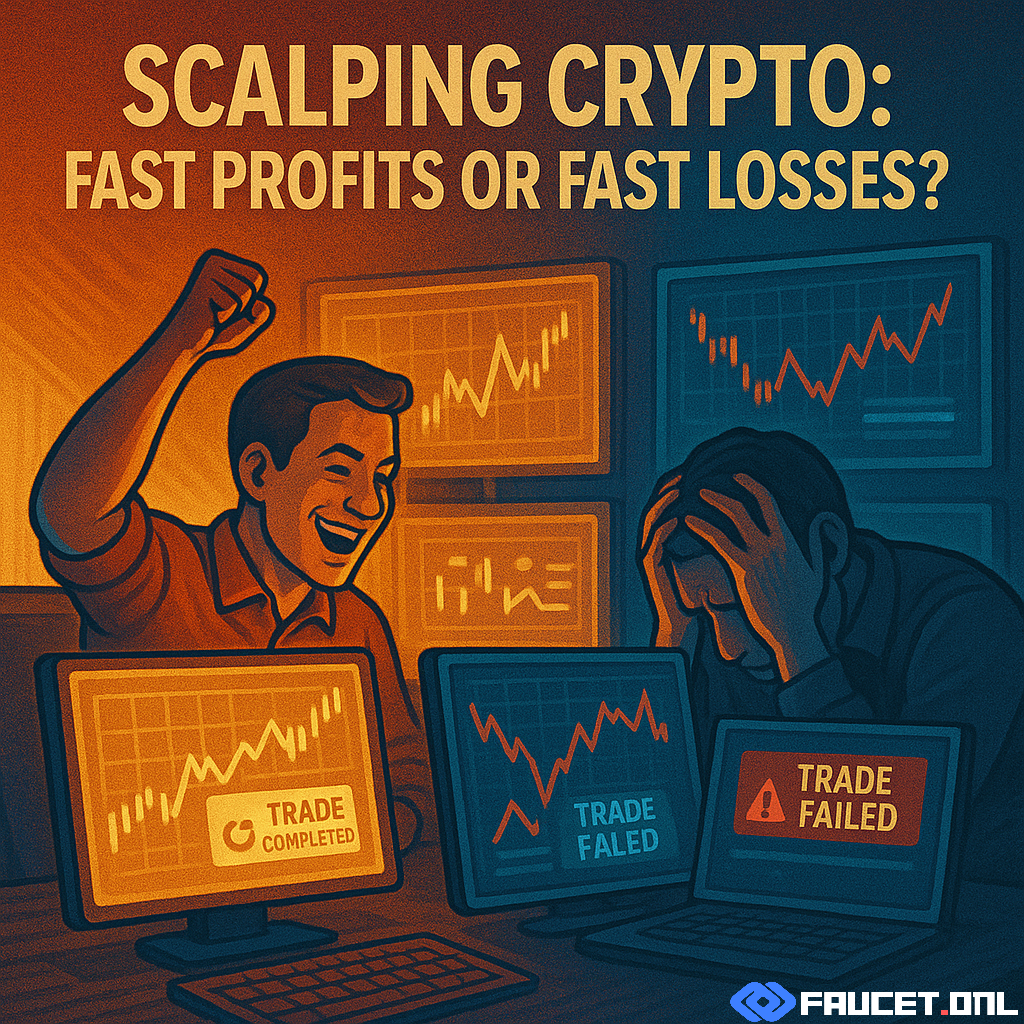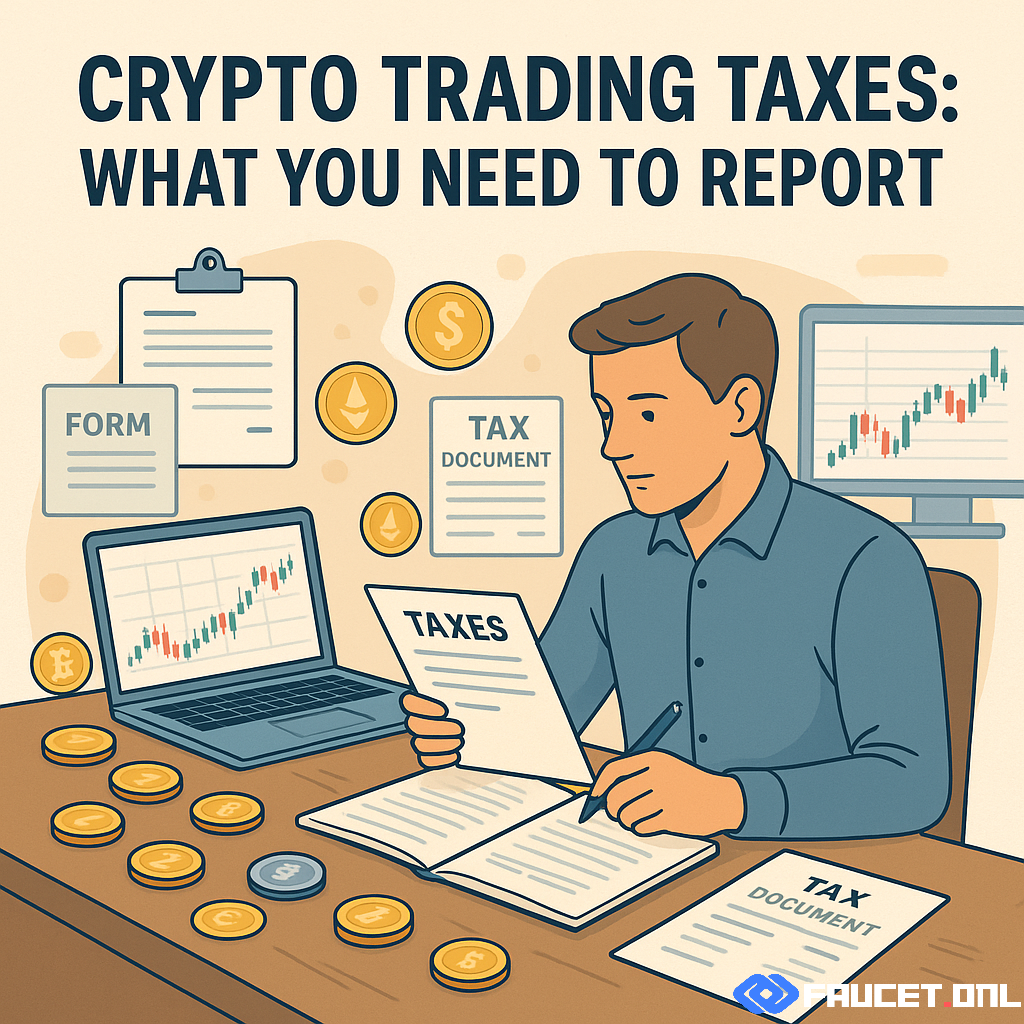What’s Scalping?
Crypto scalping is a rapid-fire trading strategy where traders attempt to profit from tiny, short-lived price movements. Unlike day trading, which might involve a handful of trades in a session, scalpers can execute dozens—or even hundreds—of trades within a single day. The idea is simple: enter and exit positions within seconds or minutes, banking on small price fluctuations that add up over time. Scalping is not about catching major trends or holding assets overnight; it’s about quick in-and-out moves, riding micro-volatility in the market.
Scalping is favored by traders seeking constant action and those drawn to the excitement of fast-paced markets. It requires a deep understanding of market mechanics, liquidity, and order execution. Because profits per trade are small, scalping depends on volume—many trades made quickly, each contributing a sliver to the day’s total returns. This strategy is popular in highly liquid crypto markets, such as Bitcoin (BTC), Ethereum (ETH), and other major pairs with tight spreads and high trading volumes.
However, the simplicity is deceptive. Scalping is among the most demanding trading styles, requiring intense focus, rapid decision-making, and strict discipline to avoid the devastating effects of small mistakes compounded over many trades.
How Scalping Works
At its core, scalping exploits minor price changes, often just a few dollars or less. Scalpers use technical analysis, order book data, and trading bots to identify brief inefficiencies—tiny gaps between supply and demand that appear and vanish in seconds. Entry and exit points are decided based on indicators like moving averages, RSI, and support/resistance levels on very short timeframes (such as 1-minute or 5-minute charts).
Here’s how a typical scalping process unfolds:
- Identify a highly liquid crypto pair with minimal spread (e.g., BTC/USDT, ETH/USDT).
- Use technical tools to spot a likely price bounce or micro-trend.
- Enter a position with a tight stop-loss and a defined profit target, often just 0.1% to 0.3% away.
- Exit as soon as the target is hit or the trade moves against you—no hesitating, no hoping.
- Repeat the process rapidly, compounding small wins (or losses) throughout the session.
Speed is crucial: price movements in scalping are measured in seconds. Most scalpers use limit orders to avoid slippage and set pre-defined exits for both profits and losses. Automation—through trading bots or advanced order types—is common, as human reaction time often isn’t fast enough in volatile markets.
Professional scalpers operate with strict trading plans and rarely deviate from their setups. Emotional detachment and consistency are the backbone of successful scalping; letting emotions or ego drive decisions is a fast track to ruin.
Tools Needed for Scalping
Effective crypto scalping depends on speed, precision, and reliable tech. Here’s what fast traders typically use:
- High-Speed Trading Platform: Choose an exchange known for low latency, minimal downtime, and tight spreads. Popular platforms for scalping include Binance, Bybit, OKX, and Kraken.
- Advanced Order Types: Limit, stop-limit, and OCO (One Cancels the Other) orders are essential for executing rapid entries and exits.
- Real-Time Market Data: Instant access to live order books, price feeds, and depth charts is critical—seconds can make the difference between profit and loss.
- Trading Bots & Automation: Automated strategies can execute trades with lightning speed, following pre-set rules without emotional interference. Many scalpers use third-party bots or custom scripts.
- Technical Analysis Tools: Fast, customizable charting platforms (like TradingView) with 1m/5m interval charts, alerts, and overlay indicators.
- Stable Internet Connection: Even minor lags or disconnects can result in costly slippage or missed exits.
- Risk Management Tools: Instant stop-loss and take-profit settings to lock in small gains and cap losses before they escalate.
Beyond the basics, serious scalpers often invest in VPS (Virtual Private Servers) for uninterrupted connectivity, and even subscribe to premium APIs for faster data feeds and order execution.
Risks of Crypto Scalping
Scalping isn’t just about fast profits—fast losses are equally (if not more) common. Here are the core risks every scalper faces:
- High Trading Fees: Even with low-fee exchanges, transaction costs add up rapidly with dozens or hundreds of trades. Fees can eat up profits or turn winning days into losses.
- Slippage & Liquidity Gaps: In fast-moving markets, orders may not fill at expected prices, resulting in slippage. Small-cap coins or illiquid pairs can spike spreads or cause price jumps against you.
- Emotional Burnout: Scalping is mentally exhausting. The need for relentless focus and instant decision-making can quickly lead to stress, fatigue, and mistakes.
- Overtrading: The pressure to constantly find setups can lead to chasing trades, revenge trading after losses, or deviating from the plan—each a recipe for disaster.
- Automation Risks: Bots malfunction, APIs fail, and scripts can misfire. Blindly trusting automation without monitoring can result in significant losses, especially in volatile markets.
- Leverage Dangers: Many scalpers use leverage to amplify tiny moves, which can just as easily magnify losses. Liquidations happen fast if the market turns.
The reality: even highly skilled scalpers can face long streaks of small losses that outweigh modest wins, especially in choppy or unpredictable markets. Scalping is not a guaranteed money machine, and most beginners lose more than they gain.
Pro Tips for Fast Traders
Want to survive (and maybe thrive) as a scalper? Here are battle-tested tips from professionals:
- Master Your Platform: Know every feature, hotkey, and order type. Seconds count—don’t fumble with the interface mid-trade.
- Track All Trades: Keep a meticulous log of every entry, exit, and result. Analyze performance, spot patterns, and refine your strategy regularly.
- Limit Trading Time: Set strict session times—don’t trade for hours on end. Fatigue leads to mistakes.
- Use Tight Risk Controls: Never risk more than a tiny fraction of your capital per trade. Stop losses must be automatic and non-negotiable.
- Avoid Illiquid Pairs: Stick to the highest volume coins and pairs. Don’t chase obscure assets for bigger moves—the spreads and slippage will destroy you.
- Detach Emotion: Treat every trade as just another probability play. Don’t chase losses, don’t get greedy after a win, and never let FOMO or frustration dictate trades.
- Automate—But Don’t Blindly Trust: Use bots and scripts, but monitor them closely and test strategies in demo mode before going live.
- Know When to Stop: Set daily win/loss limits. Walking away is a skill; chasing the market leads to disaster.
The bottom line: Crypto scalping is a legitimate strategy for some, but it is not for everyone. Success requires a professional mindset, robust tools, and relentless discipline. For most, the risk of fast losses outweighs the chance of fast profits.
Conclusion: Should You Try Scalping?
Scalping in the crypto market offers the promise of rapid-fire profits but is equally notorious for fast, painful losses. This strategy is best suited to highly disciplined traders with technical expertise, a passion for constant action, and the stamina for long hours of focus. If you’re considering scalping, start small, track everything, and prioritize survival over excitement. For most traders, slower, more methodical approaches offer a better risk-reward ratio in the long run.
Remember: in the race for fast crypto gains, those who survive longest—win. Know your limits, respect the risks, and trade smart.



